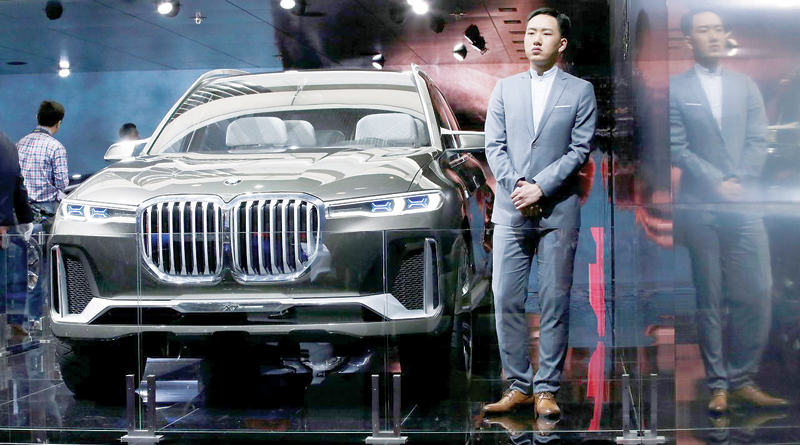

Luxury cars in China are pointing to economic hazards ahead. Mercedes-Benz, BMW and peers notched up healthy revenue growth in the country during the third quarter. The wider industry, meanwhile, is suffering: data released on Monday showed a 6.3 per cent drop in September sales compared with 2018, and the national auto association expects a 5 per cent decline this year.
It lays bare a widening social divide that is sending brands scrabbling.
The world’s largest market has had a bumpy ride. Car sales in 2018 fell for the first time in two decades, and look set to drop again. Wholesale figures in the first half of 2019 were down 14 per cent, compared to a year earlier. The luxury segment, however, grew by 6 per cent in the six months, and has shown few signs of braking significantly since.
While most Chinese households have suffered as the economy cools and tariffs bite, the affluent have been sheltered.
Their budgets are growing faster, according to a Bernstein survey this month. In part, it’s down to the impact of policy: last year, the end of a generous tax break for smaller engines squeezed sales of more modest motors, for instance.
China’s wealth gap has been widening for years, as has the gulf between the well-off and the filthy rich. The proportion of national income earned by the most prosperous 10 per cent of the population was over 40 per cent by 2015, compared to 27 per cent in 1978, according to a July study by a team of economists including Thomas Piketty. The middle class share remained steady.
An economic slowdown increases the breadth of that chasm. Last year, growth in disposable income per capita halved for middle-income households, according to Capital Economics.
The figures barely budged for wealthier families. The Bernstein study found better-off buyers in so-called first-tier cities also have a much rosier view on both the country’s financial outlook and their own prospects.
Other segments of China’s car market, like electric vehicles, have been safe havens at times. But it has not lasted, as subsidies wax and wane.
EV sales started strong this year, yet September figures fell by a third from a year earlier. Fancy cars, though, are proving less vulnerable to policy fluctuations. That has left more western and local manufacturers clambering upmarket.
BYD and peers who have specialised in cheaper models for the masses have a steep hill ahead. Partnerships and acquisitions will be one way to put pedal to the luxury metal. — Reuters
Oman Observer is now on the WhatsApp channel. Click here



